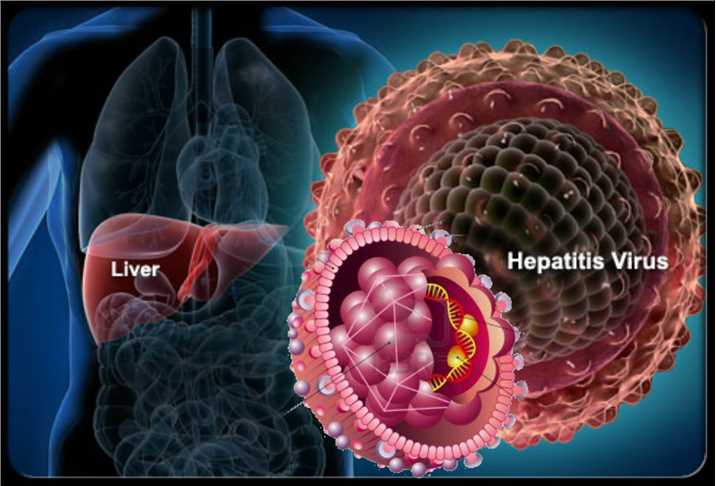Equipped with world-leading technology platforms and professional scientific staff, Creative Biolabs offers our clients a wide range of Anti-Virus Biomolecular Discovery services. Our scientists are dedicated to serving every unique need of our clients in the discovery of antibodies and peptides targeting hepatitis virus.
Hepatitis means inflammation of the liver. Since the liver is a vital organ that processes nutrients, filters the blood, and fights infections, its function can be affected after inflammation or damage. The most common types of hepatitis are hepatitis A, hepatitis B, hepatitis C, hepatitis D and hepatitis E.

Hepatitis A is caused by hepatitis A virus (HAV), whose primary replication site is liver. HAV is the most common agent causing acute liver disease worldwide. The World Health Organization (WHO) estimates that 1.5 million of HAV clinical cases occur globally every year.
Hepatitis B virus (HBV) causes two forms of hepatitis, acute and chronic. The WHO estimates that more than 1/3 of the world population already possess serologic evidence of HBV infection. 350 million people are chronically infected and approximately 600,000 deaths are reported each year. Infected patients have a high risk of developing serious problems related to the disease, such as liver fibrosis, liver cirrhosis and hepatocellular carcinoma.
Hepatitis C virus (HCV) constitutes a significant health burden worldwide. HCV has a high propensity for establishing a chronic infection and about 130–170 million people suffer from chronic hepatitis C. In the long-term, this can lead to advanced liver fibrosis, cirrhosis and hepatocellular carcinoma. As a consequence, HCV is the most common indication for liver transplantation in developed countries.
Hepatitis D virus (HDV) is a worldwide human pathogen. However, the virus is defective and depends on obligatory helper functions provided by HBV for transmission. Indeed, HDV requires an associated or preexisting HBV infection to become infectious and thrive. Studies have consistently shown that most patients with HBV and HDV co-infection have more severe liver damage, more rapid progression to cirrhosis, and increased hepatic decompensation and death than those with HBV infection alone.
Hepatitis E is a liver disease caused by hepatitis E virus (HEV). HEV has at least 4 different types, including genotypes 1, 2, 3 and 4. Genotypes 1 and 2 have been found only in humans while genotype 3 and 4 circulate in several animals without causing any disease, and occasionally infect humans. Every year, there are an estimated 20 million HEV infections worldwide, leading to an estimated 3.3 million symptomatic cases of hepatitis E.
The hepatitis A virion is a naked icosahedron whose surface is composed of three structural proteins (VP1, VP2, and VP3). VP1 is the predominantly exposed protein. Studies on neutralizing monoclonal antibodies have shown that this structural protein contains at least some of the virion neutralization antigenic sites.
HBV causes acute, self-limiting, and chronic infections in humans. The antibody response to hepatitis B surface antigen (HBsAg) appears during the late phase of infection. The antibodies to HBsAg are able to neutralize HBV infectivity, and therefore, clear circulating HBsAg and HBV particles from peripheral blood. The presence of anti-HBs is considered an indicator of immunity to HBV infection. Vaccination with HBsAg is proven to be effective to prevent HBV infection.
Core protein (Cp), a 21.5 kDa protein, is the structural component of the viral nucleocapsids and plays multiple roles in HBV replication. It contains a globular N-terminal domain and a C-terminal domain. Cp is bound to nuclear viral DNA and affects its epigenetics. In an infected cell, Cp modulates every step of the viral lifecycle. Studies have shown that intracellular delivery of a single-chain antibody against core protein via cell-penetrating peptide inhibits HBV replication in vitro.
The use of a viral envelope protein has the advantage of potentially inducing not only T-cell responses, but also neutralizing antibodies and complement activation. E1 and E2 proteins most likely play a pivotal role in the assembly of infectious particle and in the initiation of viral infection by binding to its cellular receptors. The identification of broadly neutralizing antibodies (bnAbs) that target conserved and functionally important regions of the E1 and E2 proteins, provides a major opportunity to design vaccines that induce robust antibody responses to one or more of these epitopes. E1 protein has always been chosen as vaccine rather than the E2 protein not only because E2 has the disadvantage of displaying a very high strain-to-strain variation in the hypervariable region I (HVRI), but also because of the higher degree of inter-genotype cross-reactivity of E1 as compared to E2. It has been suggested that the humoral and cellular immune responses to E1 envelope protein are largely impaired in patients with chronic active hepatitis C, and that such responses may be important for clearance of HCV.
As an undisrupted global leader in antibody discovery, Creative Biolabs has successfully developed an advanced AntInfect™ Platform, which is optimal for anti-infectives biomolecular generation. We are dedicated to satisfying every unique need of our clients in anti-hepatitis virus biomolecular development. Please contact us for more information and a detailed quote.
References: